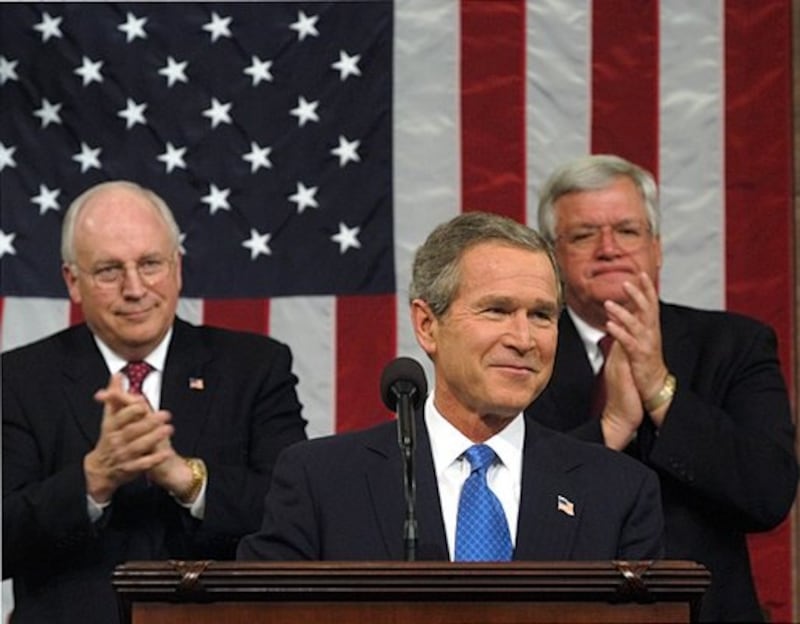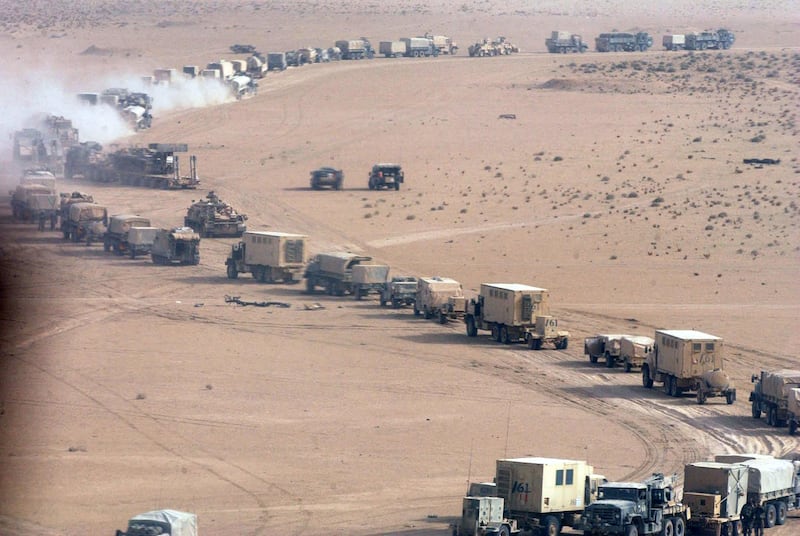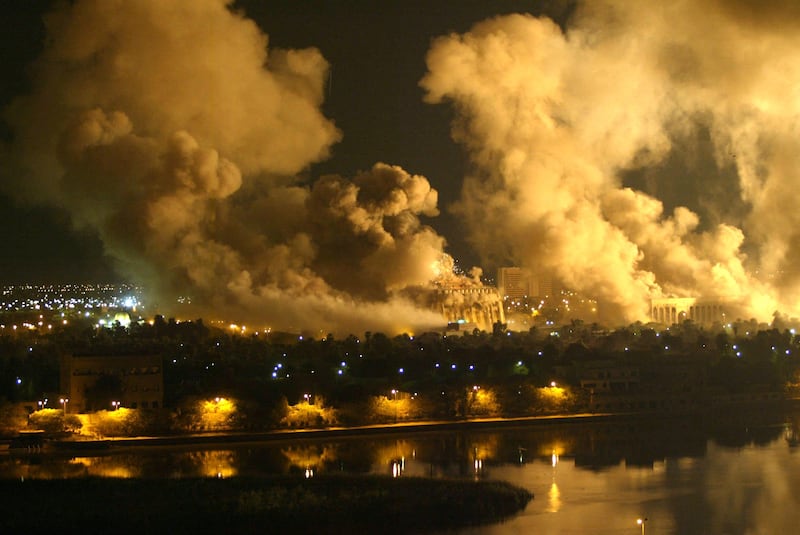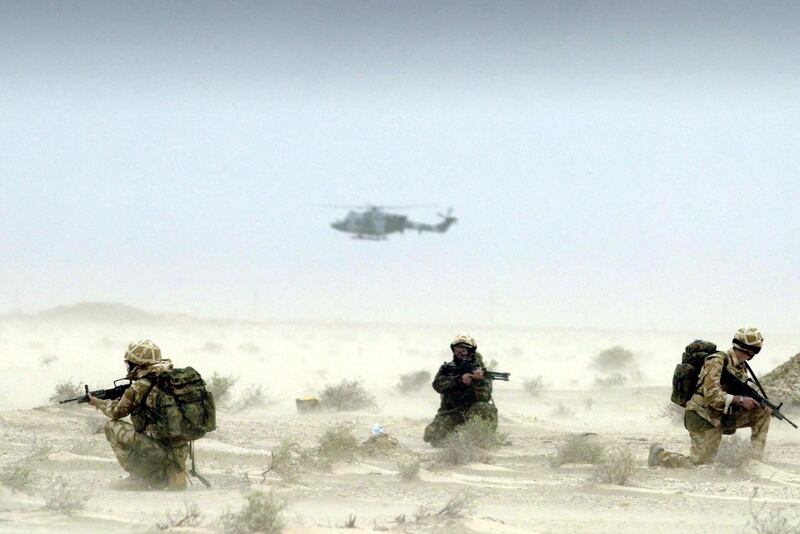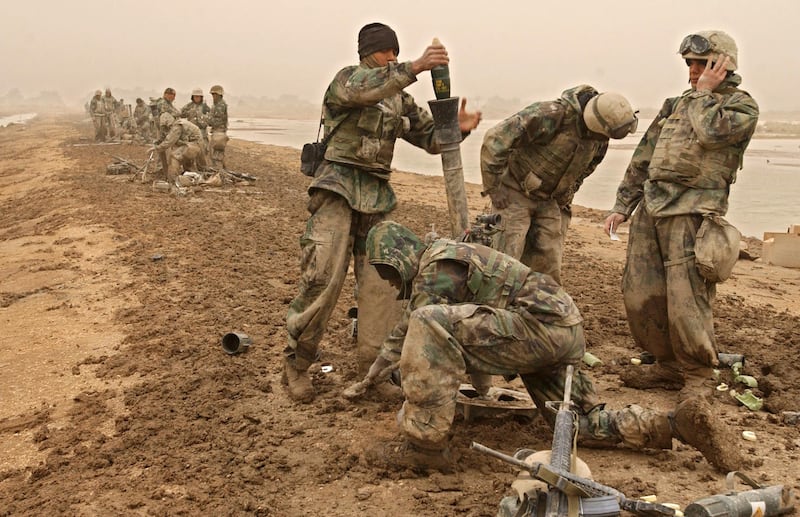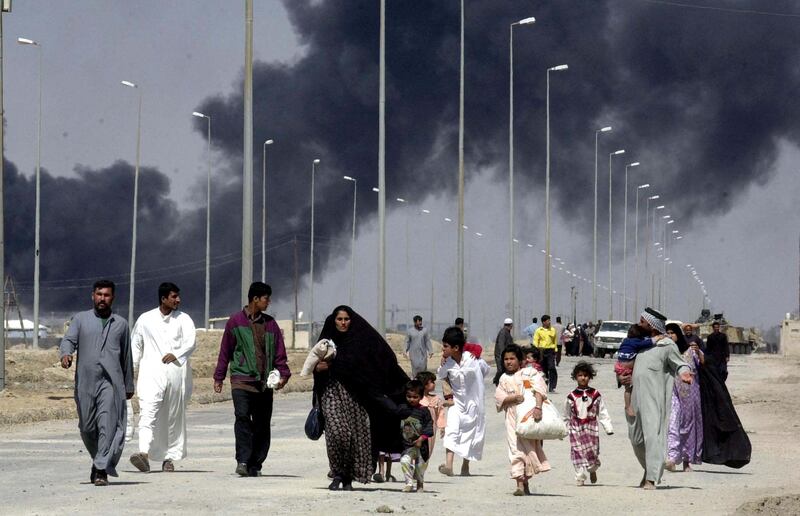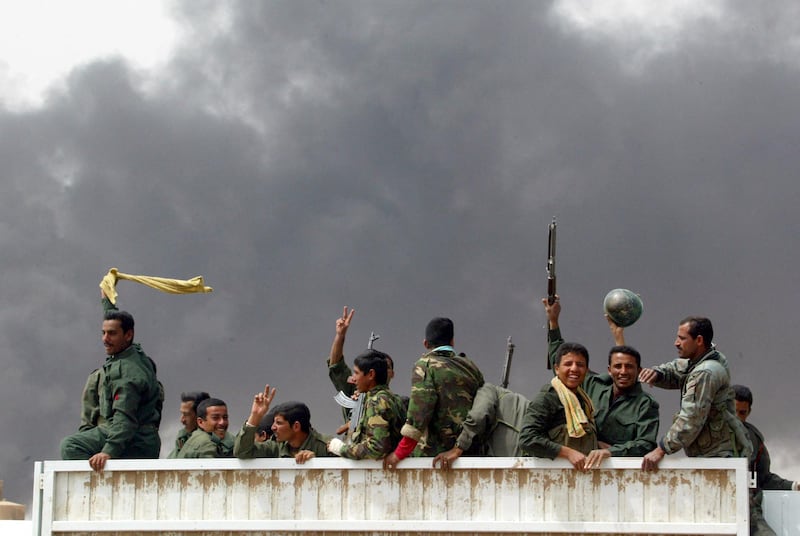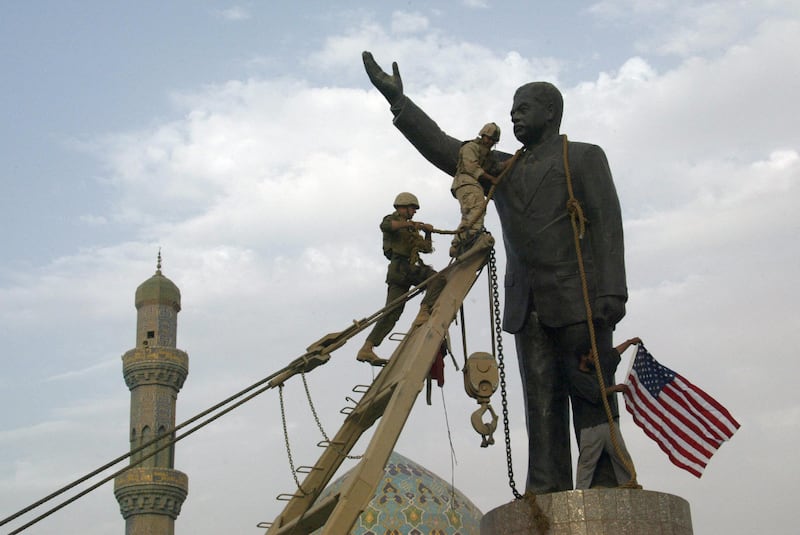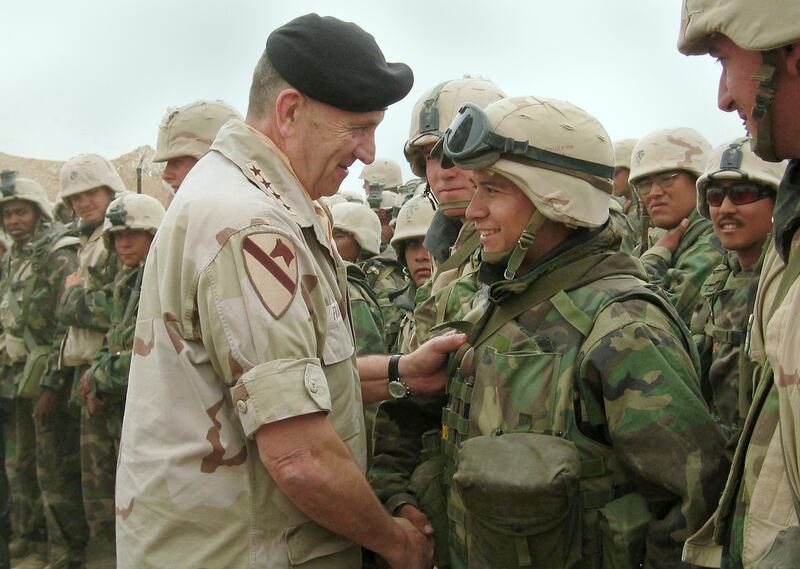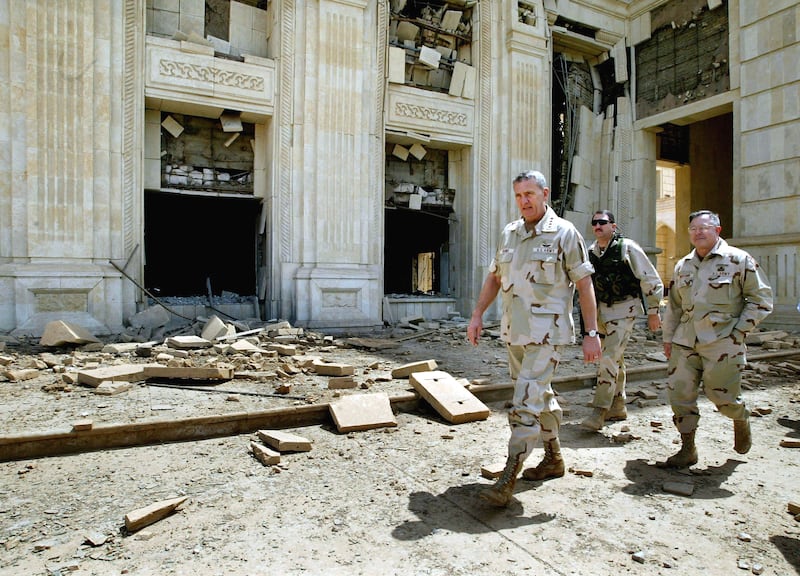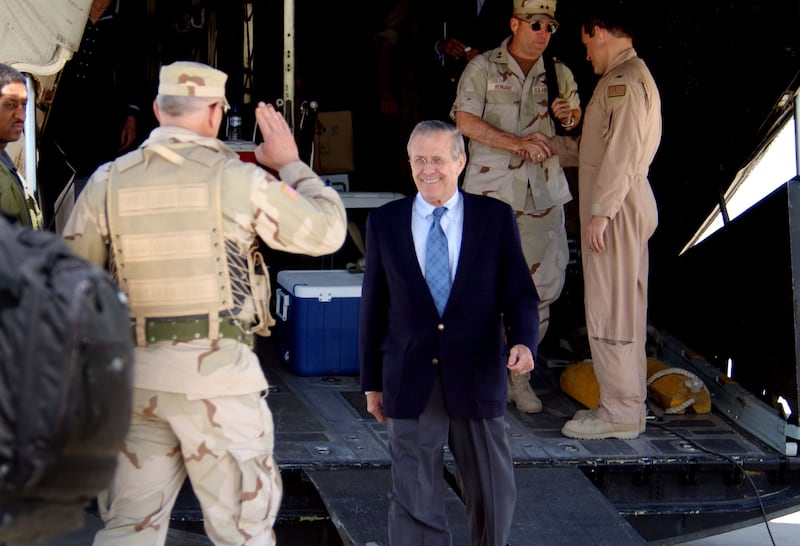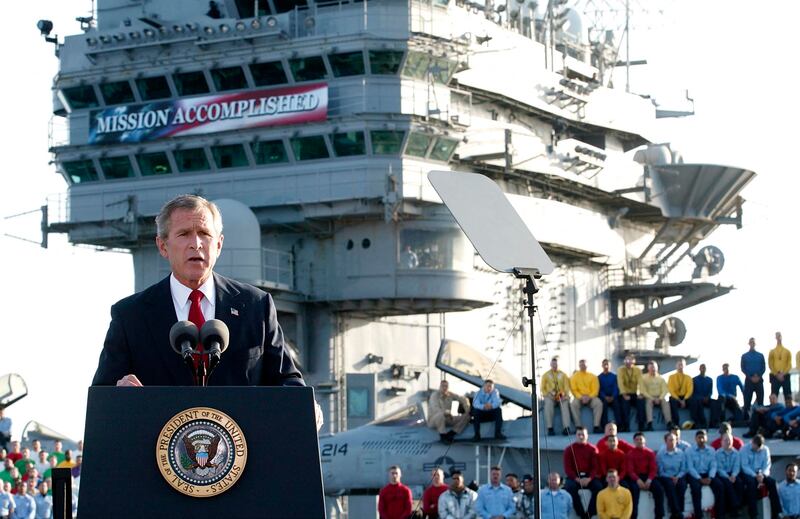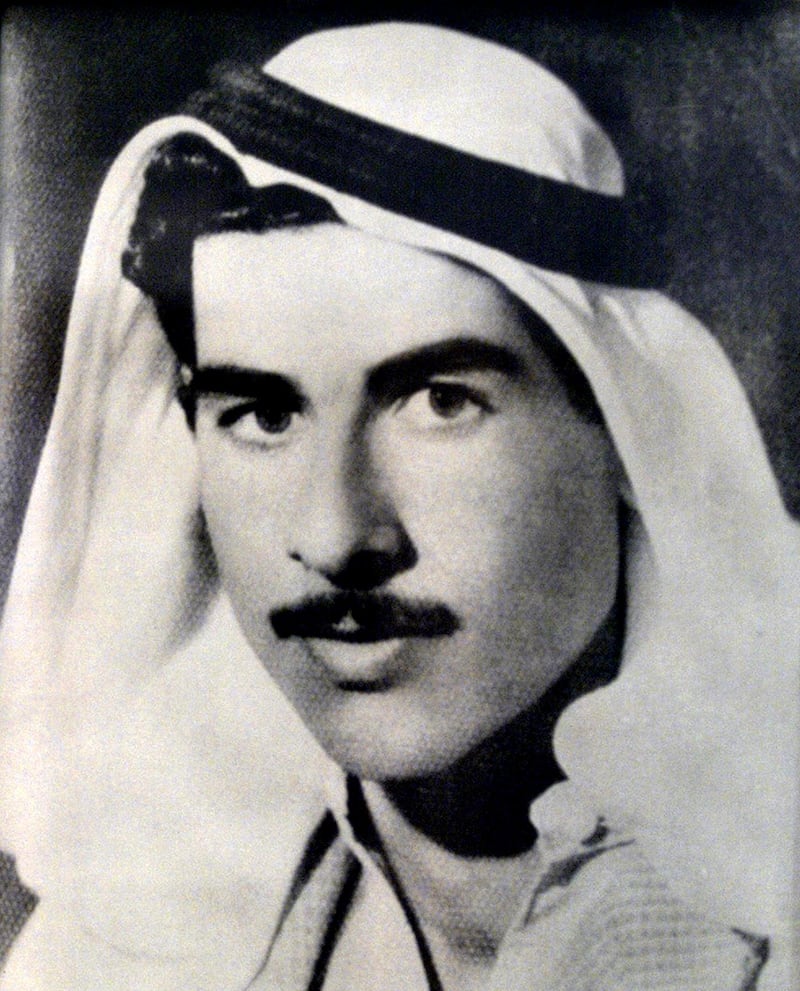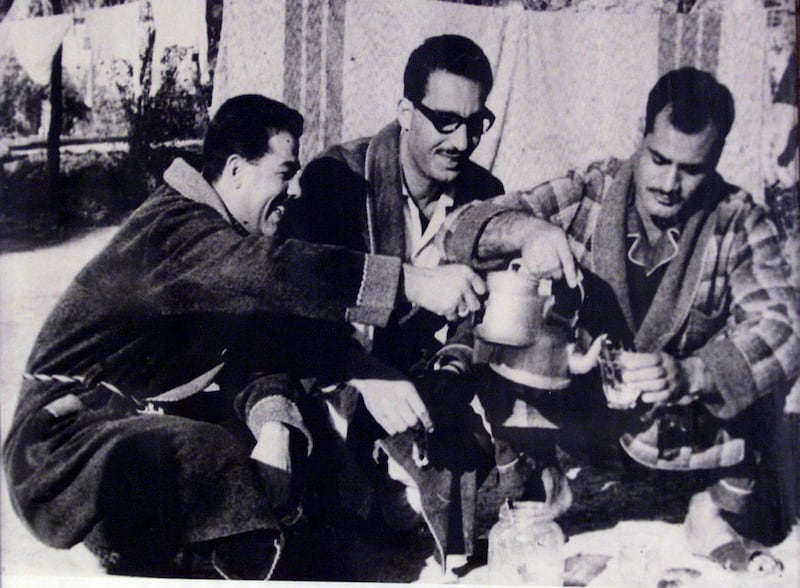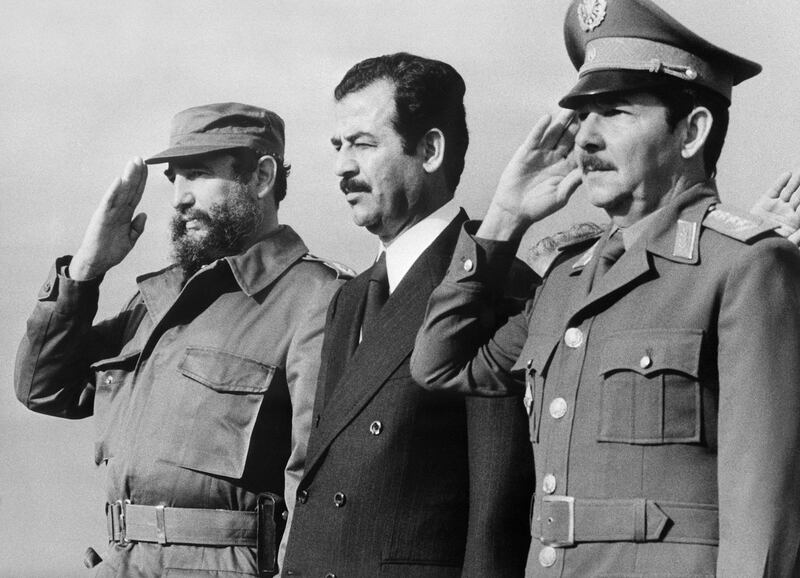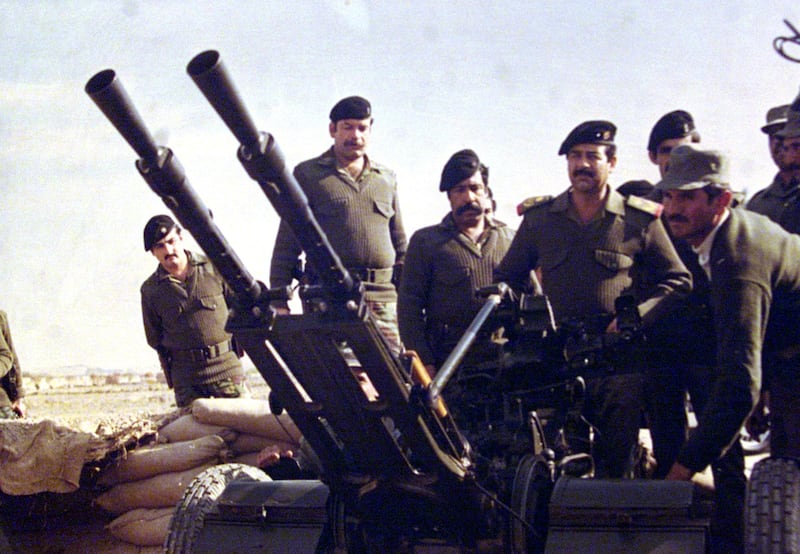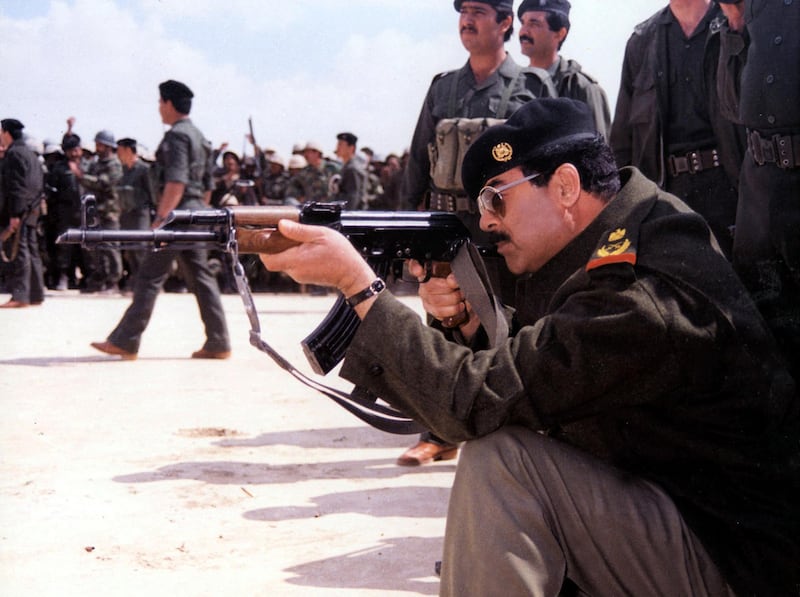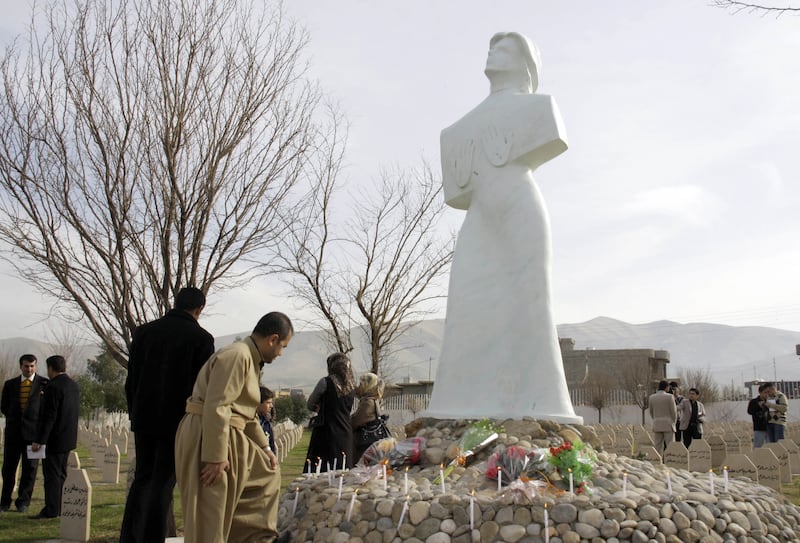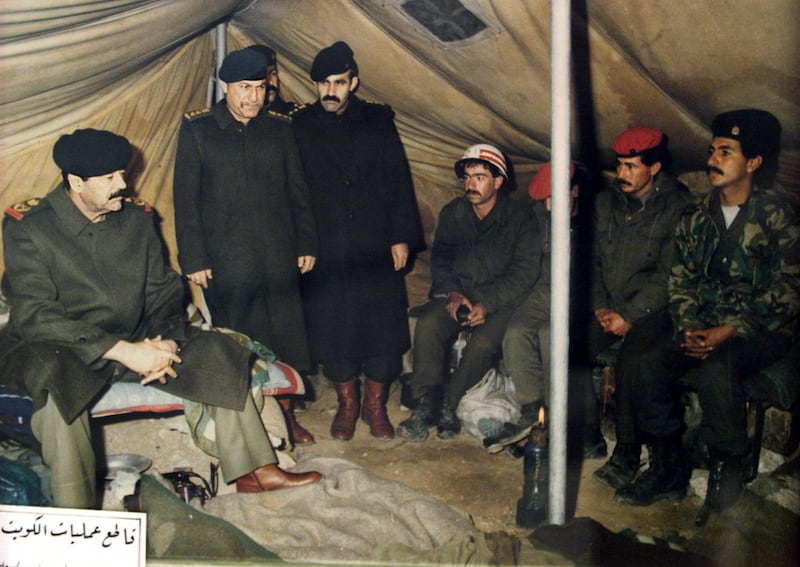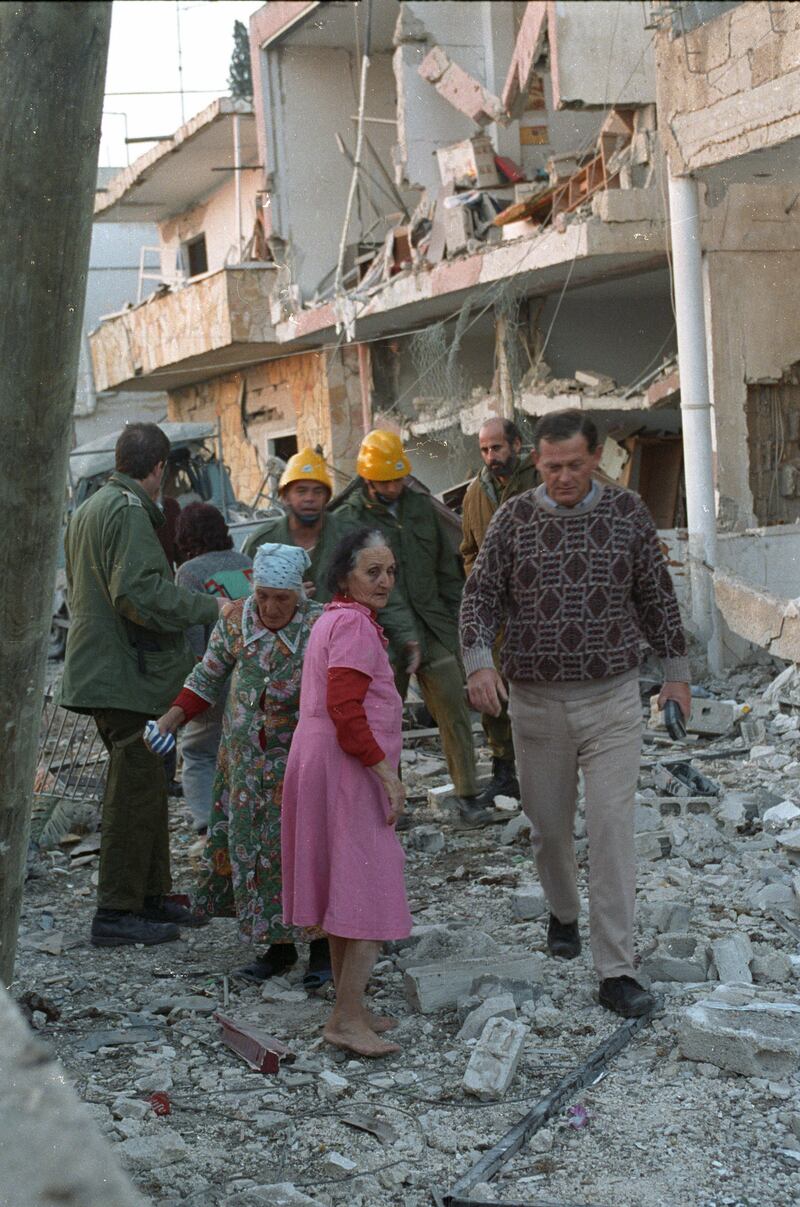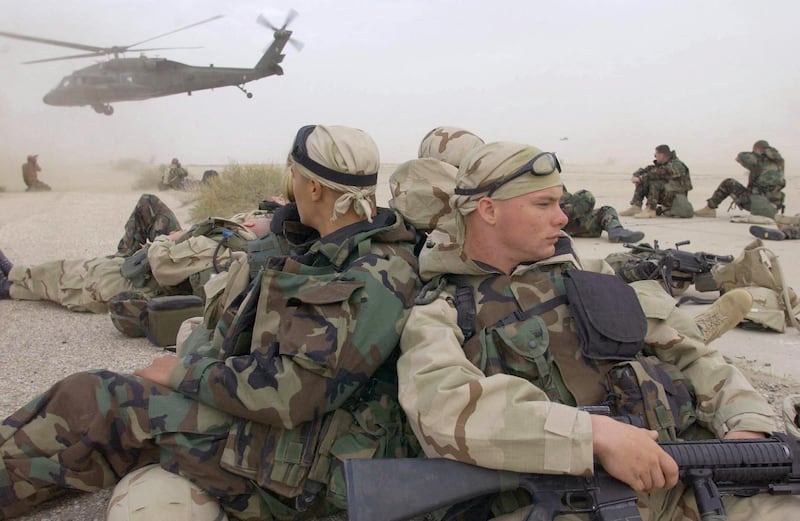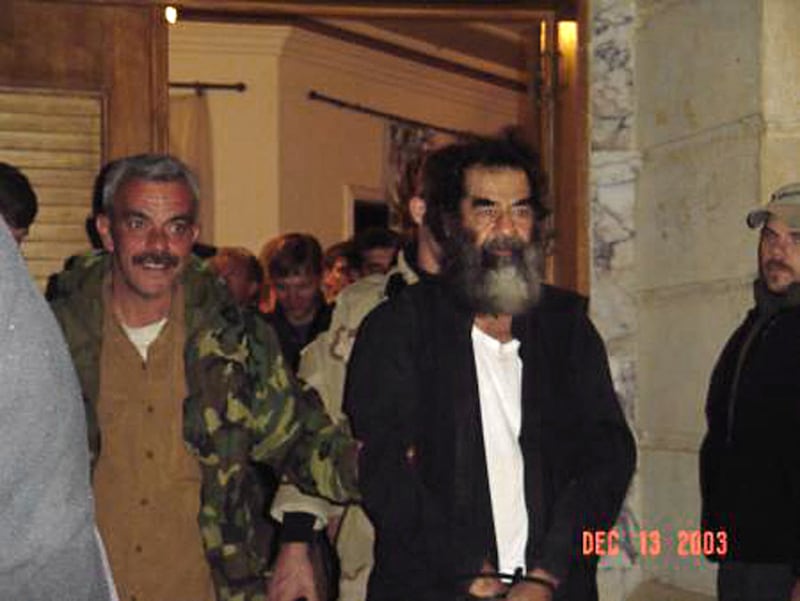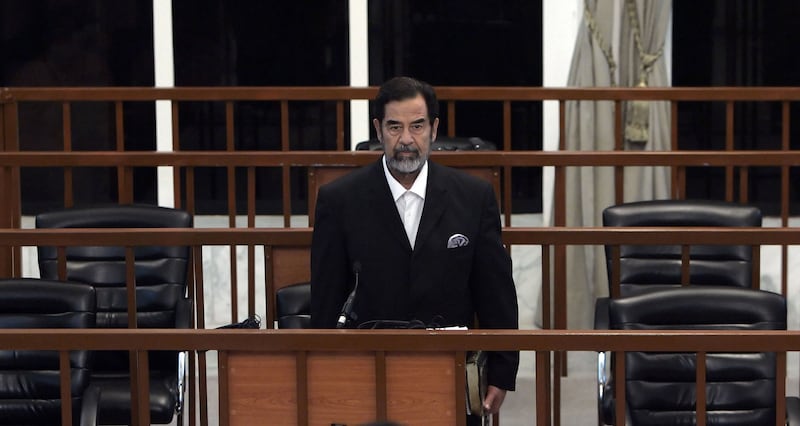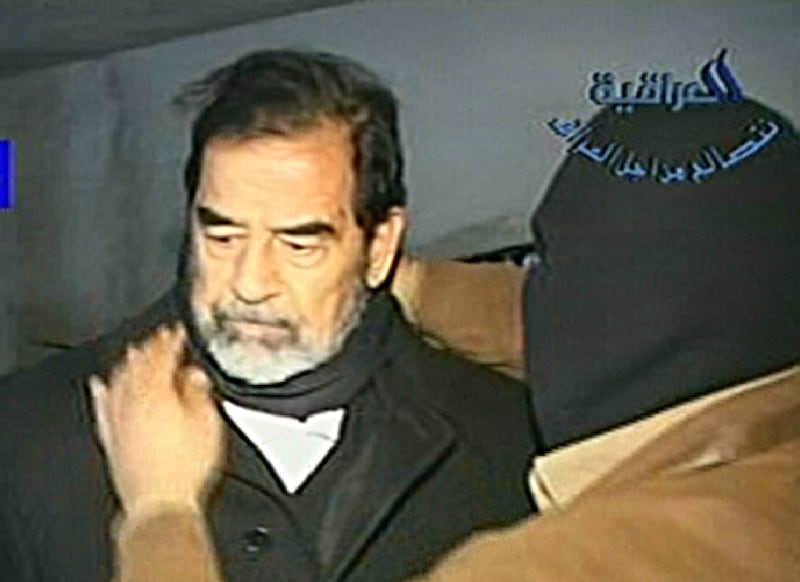When George W Bush gave his State of the Union address to the US Congress 20 years ago, he warned of “decisive days” ahead.
Less than two months later, America led an invasion of Iraq that defined the beginning of the 21st century. The repercussions continue to reverberate.
Each year, Americans turn on their televisions to watch the State of the Union speech. President Joe Biden is delivering his third on Tuesday.
The annual remarks, in which US leaders outline legislative goals and give an assessment of America’s direction, often amount to a laundry list of unmemorable talking points.
But Mr Bush’s speeches in 2002 and 2003 were different. Historians will remember them for the way in which the president presented his blueprints for a war that was justified by faulty intelligence.
“In today’s parlance, we would call it The Big Lie,” said Dr Ray Smock, who was the first official historian for the House of Representatives, from 1983 to 1995.
Mr Bush opened his 2003 speech with talk about domestic issues such as education, the economy and even hydrogen-powered cars.
He then turned to Iraq, detailing how Saddam Hussein was amassing stockpiles of chemical and biological weapons, with the aim of using them to “to dominate, intimidate or attack".
“Our intelligence officials estimate that Saddam Hussein had the materials to produce as much as 500 tonnes of sarin, mustard and VX nerve agent,” Mr Bush said.
“The British government has learnt that Saddam Hussein recently sought significant quantities of uranium from Africa.”
Those and other claims he made turned out to be wrong, based on faulty intelligence that politicians from the “Coalition of the willing” — mainly the US and UK — who were eager to invade Iraq were all too ready to believe.
Documents alleged that Saddam was seeking to acquire yellowcake uranium from Niger. Those documents were forged.
“As it turns out, the whole war was predicated on a falsehood that Saddam Hussein had weapons of mass destruction,” Dr Smock, director of the Robert C Byrd Centre for Congressional History and Education, told The National.
2003 invasion of Iraq — in pictures
America in 2003 was still reeling from the September 11, 2001, Al Qaeda attacks that killed about 3,000 people.
A US-led invasion of Afghanistan that year quickly led to the overthrow of the Taliban government, but the Bush administration soon lost interest in the day-to-day running of the country and shifted its focus to opening a second front in the so-called war on terror.
Mr Bush was surrounded by a coterie of ultra-hawkish advisers, including his vice president Dick Cheney, secretary of defence Donald Rumsfeld and Mr Rumsfeld's deputy, Paul Wolfowitz.
Within hours of the Al Qaeda attacks in New York and at the Pentagon, the men were looking for reasons to blame the horror on Saddam, even though the Iraqi dictator was not involved.
Memos from Mr Rumsfeld that were declassified in 2013 show that by November 2001, he was asking staff about “how [to] start” a war with Iraq.
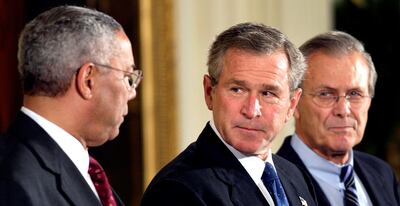
Mr Bush’s 2002 State of the Union address reflected this quest for conflict.
He famously referred to Iran, Iraq and North Korea as an “axis of evil”, using language that harked back to the Nazi-allied Axis powers of the Second World War.
“States like these, and their terrorist allies, constitute an axis of evil, arming to threaten the peace of the world,” Mr Bush said in 2002.
“By seeking weapons of mass destruction, these regimes pose a grave and growing danger.”
When he returned to Congress for his 2003 speech, war planning was well under way and the invasion was all but inevitable.
Even as he spoke to the packed chamber, tens of thousands of US troops were massing in or near the Middle East.
“We seek peace. We strive for peace,” Mr Bush claimed.
But “if war is forced upon us, we will fight in a just cause and by just means, sparing, in every way we can, the innocent".
According to Brown University’s Watson Institute for International and Public Affairs, between 275,000 and 306,000 civilians died from war-related violence attributed to the US, its allies, the Iraqi military and police, and opposition forces.
The war also killed more than 4,400 US troops and maimed tens of thousands more. Mr Bush’s second term in office expired in 2008 with his approval rating at a record low of 25 per cent, according to Gallup.
In the years since, his approval rating has improved as the chaos of the Iraq invasion slips from people's memories and the former president is seen to be ageing gracefully.
But Thomas Balcerski, a presidential historian and visiting professor at Occidental College in Los Angeles, California, said Mr Bush’s legacy would forever be tarnished by the Iraq invasion.
“The aspect of the Bush presidency that continues to be problematic … the one in which historians remain critical, is precisely this moment where he led the nation to a war,” Prof Balcerski told The National.
It has been "and continues to be a source of criticism from both Democrats as well as so many of us Americans who felt then and now that it was an unjust war".
